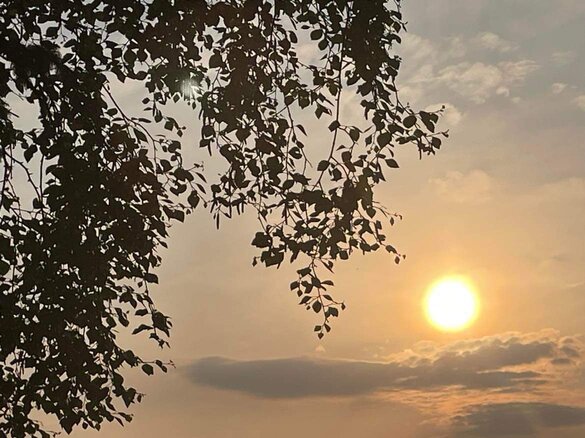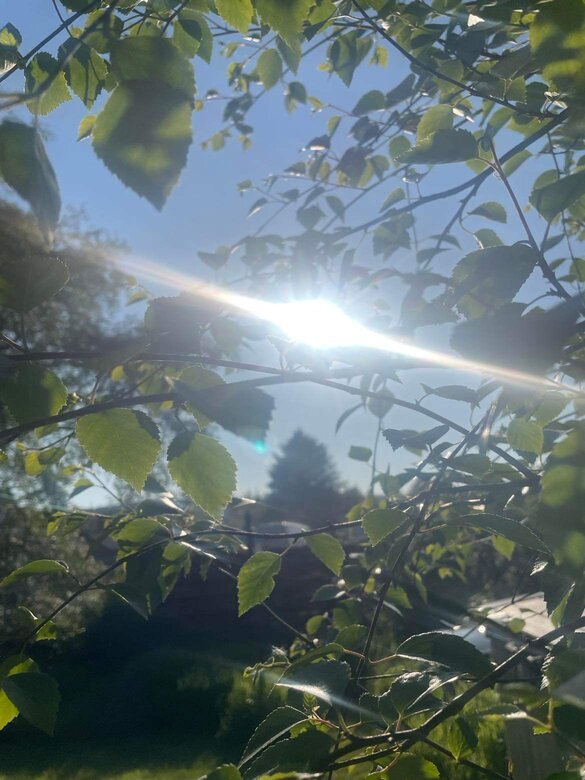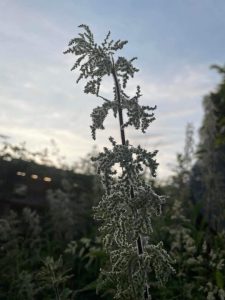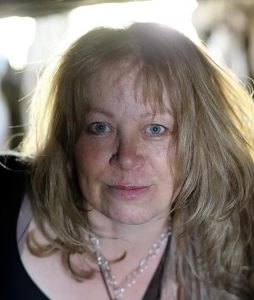Becoming the Elder – Cerridwen’s Menopause Medicine Wheel

There is tremendous power and strength which can be found in the transformation of menopause – but it is vital to find ways to cope with the physical changes too. Edwina shares invaluable Swynwraig wisdom for us here as she continues her journey around Cerridwen’s Menopause Medicine Wheel
The women sit in a circle. Each one present because they have made the journey through the midlife rite of passage we call Menopause. They come together as wise women bringing into the circle a lifetime of experience, skills and personal growth. Their bodies have changed from their younger years, their skin has wrinkled and hair greyed. Whilst they can no longer bear children, what they create now is powerful and includes art, literature, community, beautiful ceremonies, healing and change. They are the Elders and Wisdom keepers, they understand the role they take as older women is valuable to their community and the land. They are strong and can be fierce too, willing to call out injustice and stamp their feet to say “no” at anything that does not uphold integrity, love and the wellbeing of the earth and those who inherit the earth from them. They are warriors, older sisters and courageous, wise earth keepers.
Cerridwen as Goddess of Transformation and Change
Cerridwen as Goddess of transformation and change, watches and smiles at her daughters with love and pride. She understands how hard this midlife journey has been for many of them, as they let go of who they were before, learn to look after and embrace their ageing bodies and she stands with them as a teacher and mentor to all they are and will become. She is also aware as Swynwraig and healer that they need to take care of their body with food and herbs to stay strong and healthy so they can fulfil their role as Elders at a time when they are so needed in the world.
She teaches them how to care for their bones.
Osteoporosis
Osteoporosis is a disease that causes bone tissue to thin and become less dense. This produces weakened bones that are more susceptible to fracture. In the UK it affects over 3 million people with more than 500,000 people every year receiving hospital treatment for fragility fractures (bones that break after falling from standing height or less). These are predominantly postmenopausal women.
Osteoporosis shows very few symptoms and can progress to advanced stages without presenting any problems. So it’s often not discovered until weakened bones fracture or break. These breaks can be debilitating. Most often osteoporosis isn’t discovered until after a catastrophic fall that results in a broken hip or back.
In osteoporosis, the bones begin to weaken and the holes in the inner part of the bone grow larger and more numerous. This causes the internal structure of the bone to weaken and can fracture easily with a fall, or even sometimes without any trauma at all.
Osteoporosis and the menopause
As women enter menopause, their oestrogen and progesterone levels begin to fall. Oestrogen acts as a natural protector and defender of bone strength. The lack of oestrogen contributes to the development of osteoporosis. One in two postmenopausal women will have osteoporosis and most will suffer a fracture during their lifetime.
The following are additional risk factors for osteoporosis:
- Age – up to around age 30, your body creates more bone than you lose. After that, bone deterioration occurs more rapidly than bone creation.
-
- Ethnicity – Northern European women are more at risk than Afro-Caribbean women.
- Smoking – smoking can reduce bone density by up to 25%.
- Pharmaceutical drugs – steroid medications can reduce bone density.
- Lack of exercise
- Family history – if your parents or grandparents had osteoporosis or a fractured hip as a result of a minor fall, you may be at a greater risk of developing osteoporosis.
- Gender – women are up to four times more likely to develop osteoporosis than men. Women over the age of 50 have the greatest risk of developing bone disease.
Weblink to article on risks of osteoporosis and the menopause
Common symptoms include:
*Back pain if there are small fractures, or if vitamin D is extremely low
*Loss of two inches in height can be a sign of vertebral bone collapse
*Kyphosis or a hunchback appearance in the advanced stage
*Bone fractures due to weakening from osteoporosis common in hip, wrist, and spine
Prevention
Osteoporosis can be prevented. Exercise, especially weight-bearing exercises, helps to maintain healthy bone mass. Healthy lifestyle choices, such as not smoking, having too much coffee, sugar or alcohol also decrease your risk for developing osteoporosis.Make weight-bearing exercise part of your fitness routine, with exercise that forces your body to work against gravity as you move. Walking is a great way of keeping bones healthy.
Diet
Good nutrition with plenty of vegetables and fruit may stop you from losing more bone mass.
Research shows that the most important nutrients to get are calcium, vitamin D, magnesium, potassium, and phytoestrogens along with reducing alcohol consumption, stopping smoking and maintaining a healthy weight.
Calcium
Calcium is the most abundant mineral found in the body and most of it is found in our bones. It is one of the most important minerals involved in the treatment and prevention of osteoporosis. Adequate amounts of calcium in your diet can help reduce bone loss by 30 – 50 %.
Calcium-rich foods include: leafy and green vegetables, dairy, fish, nuts and seeds, fruits (figs,dried apricots, currants and oranges), drinks such as milk and fortified plant milks, Green tea, which contains natural chemicals which encourage bone growth and reduce decay.

Vitamin D
Your body makes vitamin D when the sun shines directly on your skin. Just 10 to 15 minutes of sunlight without sunscreen a couple of times a week usually gives you enough vitamin D.
A few foods have Vitamin D, including fatty fish like salmon, tuna and mackerel. You can use good quality fish oils, beef liver, cheese, and egg yolks. Mushrooms have a small amount, more so if left in a sunny window ledge to absorb the vitamin D from the sun, Fortified foods such as milk, breakfast cereal, yoghurt, and some plant-based milk.
Although it’s best to get vitamin D from sunlight and food, you can also get it in a supplement.
Magnesium
Magnesium is a mineral that plays an important role in maintaining healthy bones. It contributes to increased bone density and helps prevent the onset of osteoporosis.
Magnesium-rich foods are: Brown rice, Buckwheat, Sweetcorn, Dandelion greens, dark green vegetables, legumes such as bean, peas, chickpeas, nuts (almonds, cashew, brazil), Rye, Seeds (sunflower, sesame, pumpkin), Wheat germ/bran, Soy products such as tofu, Whole grain cereal
Cider vinegar
Adding apple cider vinegar to foods can enhance calcium absorption. This can be added to salads or just adding a tablespoon to hot water and adding honey and drinking three times a day.
Wisewoman herbs for bone health
Herbs that can help – Red clover, Black Cohosh, Horsetail, Nettle. Oatstraw, Rosehip powder, Raspberry leaf

Becoming the Elder
With modern culture separating our elderly from younger people and families in this dysfunctional youth culture, we have lost access to our elders and with this the value and importance of elders as a vital part of a healthy community and society. Elders can be defined as an older person who has a position of respect in a community through wisdom, harmony and experience. Elders form an important role in indigenous cultures and it’s interesting that some native cultures don’t always see an Elder as being an older person and it’s interesting to note that in our culture not all old people earn the title of Elders.
In my Wise Woman circles in the North west of England it’s been useful to have group discussions on the concept of Elders and how we see ourselves as older women fitting into this role. So many of us haven’t had access to true Elders in our communities and in a society that so needs this support, it’s interesting that older women (and men too!) are redefining it for today as a role we can develop and aspire to that is valuable to younger people, communities and the planet. Here’s what women themselves came up with:
- Bringing balance back into communities, healing division and separation between communities and individuals. Being that midway point that allows conversation and negotiation in conflict.
- Remembering and keeping the words of wisdom from those who came before us, so we can pass them on to younger people and through this we keep the wisdom of our recent ancestors and stories alive through the generations. We also hope that we are wise enough that younger generations pass on our words of wisdom too.
- Being playful and having a sense of humour. Not taking ourselves too seriously or being filled with our own self-importance.
- Being skilled and being able to pass on our experience and skills to others
- Standing up for what is right, speaking with truth and authenticity as well as calling out the bullshit, even if people don’t like us for it.
- Walking always with integrity and compassion in a way that will inspire others to do so themselves
- Realising what is of real value; people, relationships and good experiences and not material possessions and “things”. Most women felt they were naturally downsizing and shedding that which they don’t need and that includes unhelpful relationships.
- Caring for the earth and those who come after us. Thinking about the children and those not yet born who are affected by our actions or inactions in our earth walk.
- Being worthy ancestors.
As women age and consciously step into our role as wise elders we rewrite the narrative in a way that we hope brings healing and balance back to our communities and younger generations.
Edwina Hodkinson. BSc (Hons) MNIMH – Medical Herbalist and second spiral Priestess of Cerridwen

I have been a medical herbalist for 12 years, having graduated with a first-class degree in Herbal Medicine at Central Lancashire University. I work as a consulting medical herbalist in private practice in Bolton or via zoom, specialising in women’s health as well as working with community groups to help reconnect them to nature and the medicines growing around us. I also facilitate Wise Woman Rising workshops which help women to reconnect to the wise knowledge of menopause. I have a deep love for our native wild medicines and like to work with them as much as possible, which includes teaching local people about local herbs in a way that helps them reconnect to the world around them in a deeper way.
I have a background in nursing as well as having been a complementary therapist for over 25 years specialising in cancer care and working with the very sick. I am a forager, Clinical Reflexologist for 26 years, aromatherapist, Shamanic practitioner and Breath work coach.
websites: edwinahodkinsonherbalist.co.uk and weedsandwildmedicine.co.uk
Medical Disclaimer
The Herbal Allies are shown here as part of a larger pharmacopoeia of herbs typically used by herbalists to support women during the menopausal transition and beyond and will be explored more in further articles. They are not prescriptive in any way, nor is it suggested you use them for particular issues and menopausal symptoms. Before using any herbs it’s best to consult with a Medical Herbalist or suitably qualified practitioner as not all herbs are suitable for all women and may interact with medications.
Images credit: Aileen MacNicol